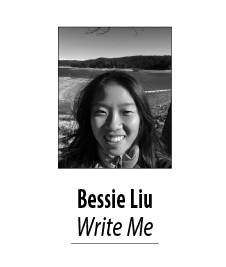
Gawande splits his book into two sections. The first half centers on the changing way societies have come to view old age.
With advances in healthcare and technology having extended the average lifespan over the centuries, death has frequently become not so much the ending due to a sudden bout of illness or an accident, but more of an “accumulated crumbling of one’s bodily systems while medicine carries out its maintenance measures and patch jobs.”
As we age, our priorities shift. We tend to place more importance upon spending time with family and friends and upon the simple pleasures of living in the present.
However, when family members can no longer safely act as caregivers, they often turn towards medical facilities like nursing homes in the hopes that their loved ones’ health will be taken care of more easily and conveniently.
While this is often true, nursing homes tend to deprive elders of their freedom and dignity and take away the independence that older people statistically value.
There have been attempts to address this problem. For example, Gawande highlights the differences between nursing homes, which were designed to ensure residents’ safety, and assisted living facilities, which try to allow residents as much independence and normalcy as possible.
Keren Wilson, one of the founders of the first assisted living home, Park Place, got the idea of creating a center that more closely resembles a home rather than a hospital to her mother, who longed to be “a person living in an apartment instead of a patient in a bed.”
In addition, Gawande also discusses the importance of geriatrics. He cites a study showing that a group of elderly patients taken care of by a geriatric team was less likely to develop depression and become further disabled than another group taken care of by their usual physicians.
By prioritizing patient comfort and living conditions, geriatricians don’t try to thwart death or push patients to seek treatment for age-related health problems. They instead advocate for patients’ wellbeing by ensuring they are receiving proper nutrition, taking the correct medications and so forth.
The prevailing issue throughout the first half of the book is summed up when Gawande quotes Wilson as saying, “We want autonomy for ourselves and safety for those we love.”
Our desperation for our loved ones to be physically well often leads us to, though unintentionally, neglect their personal desires for how they wish the end of their lives to play out.
But what happens to those patients who are not elderly but who have been told they have a terminal illness?
Should doctors encourage aggressive treatments, knowing that the patient’s quality of life would be severely reduced, perhaps even more than if the disease had been allowed to progress on its own?
In the second half of his book, Gawande shows us the importance of having discussions of mortality and asking the right questions, such as “What are your fears and what are your hopes?” and “What are the trade-offs you are willing to make and not willing to make?” before it becomes too late.
It is often regarded as taboo for doctors to talk about death with their patients. But Gawande asserts that it’s not merely a consideration but an obligation for doctors to open end-of-life and palliative care discussions.
Perhaps my favorite section of the book is when Gawande steels himself to deliver bad news to a cancer patient but refrains from overwhelming them with information and treatment options. Instead, he simply begins the conversation with the words “I am worried.”
Although it brings in researched opinions and studies, Being Mortal also incorporates the author’s personal brush with the inevitability of aging and death. Interwoven throughout the second half of the book is the ominous narrative of Gawande’s own father slowly succumbing to a slow-growing cancer.
Here, readers get to see Gawande thrust unwittingly into the role of caregiver, struggling with the very questions and issues he had previously viewed through the lens of a physician. Gawande attempts to show us the stark difference between dying in a hospital and dying at home, between grievous persistence and quiet acceptance.
Gawande raises many questions throughout the course of this book. Perhaps the overarching question he asks us to ponder is: What gives value to our lives and makes them worth living?
I find it humbling that Gawande attempts to redefine the role of the doctor as one who recognizes when to stop being the healer or the fixer of things and accepts that medical measures to prolong life may not always be the best actions to take.
As he states eloquently in his epilogue: “If to be human is to be limited, then the role of caring professionals and institutions — from surgeons to nursing homes — ought to be aiding people in their struggle with those limits.”

















